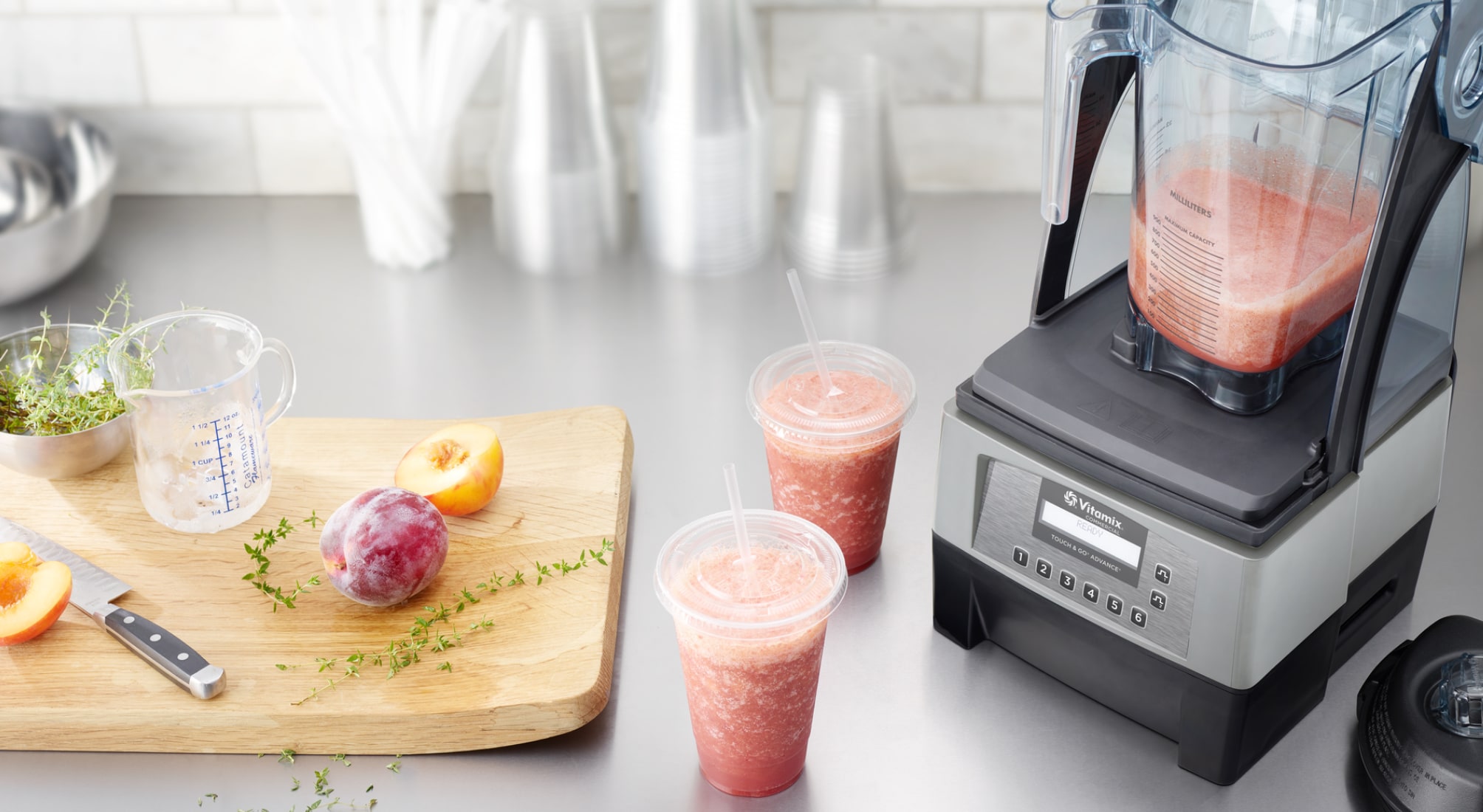The standard for blender performance in front-of-house commercial and non-commercial establishments is understandably very high, and we all know what success looks and tastes like:
- A frappé with the perfect suspension of ice crystals throughout
- A delicious fruit smoothie without seeds from the blackberries or raspberries
But these are not the results that everyone gets every time. Instead, with certain commercial blenders, we sometimes see:
- Fibrous bits of leafy greens that need to be strained
- Unprocessed seeds or grainy bits of nuts
- Inconsistent textures
So, what’s going on in these cases where the blender appears to have failed and we’re experiencing disappointment? Let’s start by looking at the unique aims of front-of-house operations.
Front-of-House Blender Challenges
In the front-of-house, we are aiming for:
1. Speed of Service. Even 20 seconds per drink – or more – can be a big deal, if you have customers waiting.
2. Quality. To please customers and keep them returning, you need to provide them with an especially pleasurable experience – a unique taste, an especially smooth mouthfeel, a special health benefit, a mixture of different textures (e.g., foamy and smoothness).
3. Repeatability and Consistency. Whatever quality your establishment is known for, it needs to be there every time. When customers return, you cannot afford to fail them.

Speed of Service
Speed of service for blended drinks is, in large part, a function of the blender itself. The best high-performance commercial blenders will be significantly faster than other models, finishing a smoothie in 20-30% less time. But speed is not just a function of the blender’s motor, as some people assume. Comparing individual specifications, such as horsepower or amps, can be misleading. Yes, the size, speed, efficiency and strength of the motor does matter but it matters in combination with many other design variables, including the shape, angle, and pitch of the blade, as well as how sharp it is and the contours of the container, including its fluting. All of these variables work together to produce a result.
Quality
Quality of the menu item is partly a function of the recipe, but the quality of the blender plays a role, too. The best commercial blenders have the ability to bring out flavors, textures, and colors from ingredients that are not always easy to process. For example, small seeds like flaxseeds have grown in popularity as an additive to smoothies and smoothie bowls, but their complete nutritional value can only be realized if they are fully processed. Leafy green vegetables, citrus, pineapple, fruits with seeds, and vegetables with fibrous components are also among the ingredients that customers have come to expect in smoothies. Only high-performance blenders are capable of smashing and cutting through these types of ingredients, unlocking their true potential in terms of nutrition and flavor. In the absence of a high-performance blender, customers may detect particles that undermine the texture of the beverage. Or, it may be necessary to add extra steps to the preparation process, for example, removing highly fibrous components of the plant before blending.
Quality is not only a product of the blender’s power but the blender’s capacity to make fine adjustments. Are you getting the textures that you are looking for, whether creamy, foamy, or with inclusions of some kind? Are the ice crystals the right size and are they suspended in the beverage, not gathering on the bottom? What about the right degree of thickness or flow? It’s possible to over-process a frozen beverage, resulting in a consistency that is too thick.

Repeatability and Consistency
Even if a high-performance blender is capable of these fine adjustments, the operator may not be because they are new to the job and are unfamiliar with high-performance blenders. Turnover is one of the larger front-of-house challenges, in addition to the time pressure that front-of-house employees are under. The surest way to eliminate these variables and ensure consistent, repeatable results for your returning customers is through a custom programming feature on the high-performance blender. Custom programming ensures the beverages are running through the same series of blending speeds and time periods every time they are prepared. The user is only responsible for pushing a button or tapping in a recipe number.
Conclusion – Focus on the Result
When ingredients don’t blend, it is most usually a reflection of the blender, rather than the user. In the front of house, there are exceptions, when employees are new and moving quickly. Even in this situation, though, there are solutions that a high-performance blender can provide, namely, custom programming, enabling employees to just push a button and move on, with the blender taking care of the speeds and timing. When it comes to achieving the right texture in a beverage – smoothness, a subtle trace of ice crystals, or an aerated lightness -- the blender should be an enabler, allowing you to dial into exactly what you want. Same with speed of service. A powerful blender should not only complete the blend faster but also enable your team to eliminate steps in preparation by using whole fruits or vegetables, without the need for straining. Your high-performance blender should be helping you to win the loyalty of your customers, with quick, timely service and delectable beverages. Anything less is not acceptable. Judge your machine by what it does for you.
Want to learn more? Check out part 2: Back-of-House Blender Challenges



